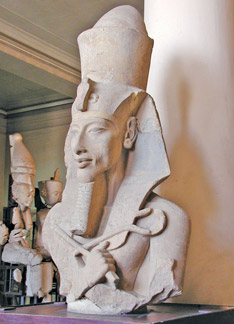Monotheist as heretic
 In 2004 Upali Ubayasekara published a novel, ‘Loka Sithiyame Ape Gama
Tiyenavada’, which he claimed was the first volume of the novel
identifying the “Triangle and the Circle at the end of the 20th
century”. Last year he gave us the story of an old man living in the
year 2016, as ‘Dedahas Visihaye Mahalla’, which should be read as a
sequel to his first novel. In the 2004 novel Ubayasekara takes us
through the early fifties in a village in Sabaragamuwa, painting a
nostalgic picture of the times and real life characters. In 2004 Upali Ubayasekara published a novel, ‘Loka Sithiyame Ape Gama
Tiyenavada’, which he claimed was the first volume of the novel
identifying the “Triangle and the Circle at the end of the 20th
century”. Last year he gave us the story of an old man living in the
year 2016, as ‘Dedahas Visihaye Mahalla’, which should be read as a
sequel to his first novel. In the 2004 novel Ubayasekara takes us
through the early fifties in a village in Sabaragamuwa, painting a
nostalgic picture of the times and real life characters.
What Ubayasekara is trying to preserve for our grand children is the
village we knew in our childhood.
At the beginning of the story the child tells his father that he
cannot find their village in the map, as they get ready to visit their
village. A village that was never in the world map.
Through these two novels he describes the innocent youth of the late
sixties, misled, exploited and destroyed by power hungry politicians.
The Triangle and the Circle he refers to are the Tantric symbols. The
Triangle is the archetype symbol of a sacred enclosure, since space
cannot be bounded by fewer than three lines.
The triangle is conceived as the first closed figure to emerge when
creation emerged from chaos. Known as the root of all manifested nature.
The Circle symbolizes wholeness or totality and represents the principle
which has no beginning, and no end, like time. It is a perfectly
symmetrical entity, equidistant from the center at all points, which
Ubayasekara tries to identify.
Ubayasekara continues with his concept of the Triangle and the Circle
in his new novel, this time taking us back 2600 years. In
‘Mithyadrushtikaya’, he says in his foreword, ‘Though man has destroyed,
rebuilt and changed his environment for the past several thousand years,
his thought process has not changed to any significant extent.
 |
|
Akhenatan
of Egypt |
Thus I believe that the country, race or time, or whatever was
preached by a religious founder would not have had any major impact on
man. My request from the reader is to keep this in mind while enjoying
this book’.
This statement helps us to understand his ideas, which are based on
the view that man has not changed much over the past few thousand years.
The novel tells us of a period in our country before the arrival of
Vijeya, about the conflict between the Yaksha and Naga tribes, their
religious beliefs and also about international trade. The story is
related by Kitsiru, son of Nagamika Vicarasiru, a leading Naga merchant.
On his return home after several years studying at Taksila, he comes
across an abandoned city, which had not even existed when he left Lanka.
Kitsiru starts searching for the story behind this city, built by
Kanitta Akilanaga, who had been called the Heretic during his very short
reign, because he had abandoned solar worship in preference to his new
monotheistic god Amun.
The history of mankind tells us, that similar thoughts, beliefs and
inventions are found from different places on earth, developing
independently. There are various theories of migration, collective
consciousness and even influence by extra terrestrial visitors, to
explain this coincidence.
It is not surprising that similar developments could have happened in
ancient Egypt and ancient Lanka.
Akhenatan of Egypt was sometimes considered as a far-sighted
revolutionary. There is some archaeological evidence about Akhenatan and
the city he built, and there is data which has made scientists suggest
that Akhenatan was suffering from Marfan’s Syndrome.
Unfortunately we do not have any archaeological evidence about the
kings who reigned in Lanka during this early period, and we have to
depend on our imagination, and the more recent discoveries of well
established human settlements in our country long before the arrival of
Vijaya.
Our Akilanaga may not have suffered from Marfan’s Syndrome, but his
physical abnormalities could have been due to a genetic change, which
may have been inherited or been a sporadic gene defect, which could
explain his deformities and strange behaviour.
There are also arguments that Akhenatan was Moses. This idea too
would have arisen because of the similarities we find in the history of
mankind, in different parts of the world. Solar worship has often been
considered as the first religious belief among mankind, which was found
as far apart as Japan, India, Africa and the Americas.
There have been attempts at early monotheism in every country, as we
find with Akenatan in Egypt, and Ubayasekara’s Akhilanaga in Lanka, but
as always, and as we find even now, monotheism always gets submerged in
polytheism.
As I finished reading the ‘Mithyadrushtikaya’, the thought flashed
through my mind, “what if Devanampiya Tissa had not decided to make
Buddhism the official religion of our country? Then would our religion
be what Ubayasekara describes here in Mithyadrsuhtikaya?”
[email protected]
|



